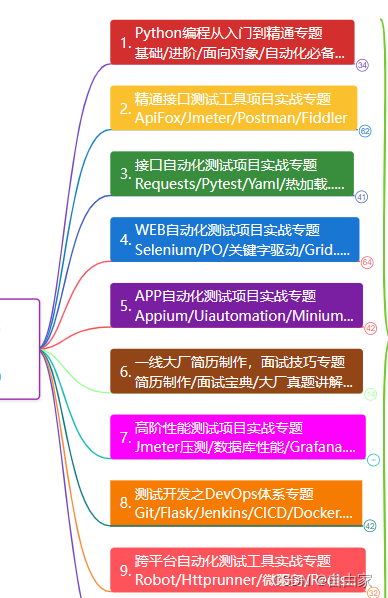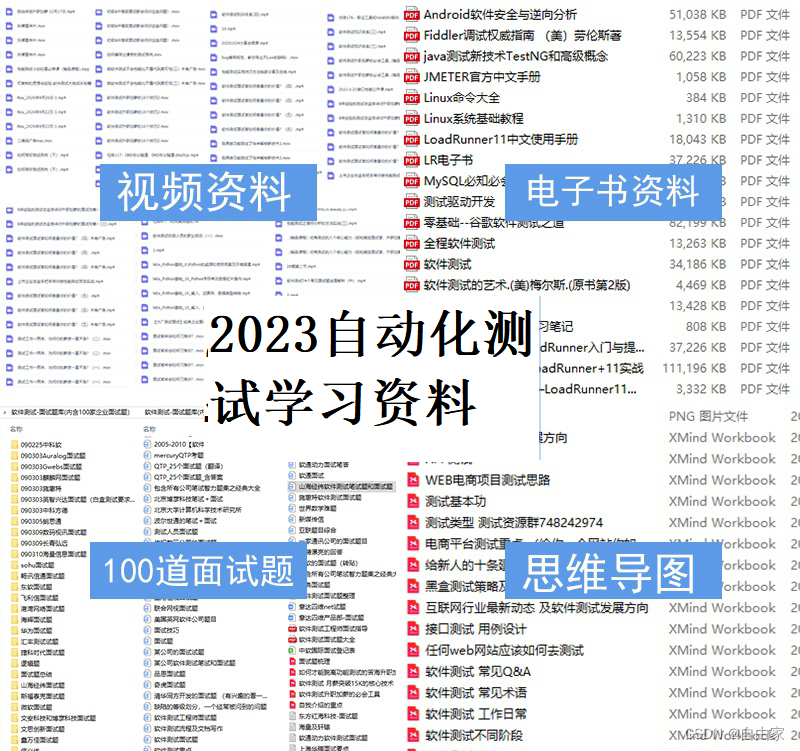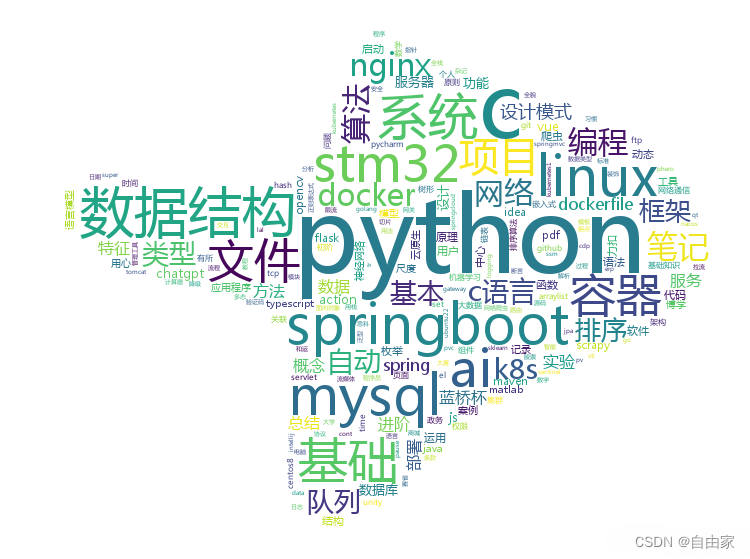您现在的位置是:首页 >学无止境 >Web自动化测试流程:从入门到精通,帮你成为测试专家网站首页学无止境
Web自动化测试流程:从入门到精通,帮你成为测试专家
B站首推!2023最详细自动化测试合集,小白皆可掌握,让测试变得简单、快捷、可靠![]() https://www.bilibili.com/video/BV1ua4y1V7Db
https://www.bilibili.com/video/BV1ua4y1V7Db
目录
摘要:
Web应用程序在今天的软件开发中占据着越来越重要的地位。保证Web应用程序的质量和稳定性是非常必要的,而自动化测试是一种有效的方法。本文将介绍Web自动化测试流程,并提供代码示例。
步骤一:选取测试工具
选择适合自己团队的自动化测试工具是很重要的。目前比较流行的Web自动化工具有Selenium、Cypress、Puppeteer等。这里以Selenium为例进行讲解。
步骤二:编写测试用例
Web自动化测试需要编写测试用例。测试用例应该尽可能涵盖所有的功能点和场景。例如,如果测试一个登录页面,测试用例应该包括以下内容:
- 检查输入框是否正常工作。
- 检查错误提示信息是否正确。
- 检查登录是否成功。
- 检查用户界面是否与预期一致。
下面是一个使用Python编写的示例测试用例:
from selenium import webdriver
# 创建浏览器对象
driver = webdriver.Chrome()
# 打开网页
driver.get("https://www.example.com/login")
# 输入用户名
username_input = driver.find_element_by_id("username")
username_input.send_keys("myusername")
# 输入密码
password_input = driver.find_element_by_id("password")
password_input.send_keys("mypassword")
# 提交表单
submit_button = driver.find_element_by_id("submit")
submit_button.click()
# 检查页面中是否存在欢迎信息
welcome_message = driver.find_element_by_xpath("//h1[contains(text(), 'Welcome')]")
assert welcome_message.text == "Welcome, myusername!"
# 关闭浏览器
driver.quit()
步骤三:编写测试框架
在编写测试用例之前,需要先编写测试框架。测试框架是一个包含多个测试用例的集合,它们可以一起运行。下面是一个使用Python编写的示例测试框架:
import unittest
from selenium import webdriver
class LoginPageTests(unittest.TestCase):
def setUp(self):
# 创建浏览器对象
self.driver = webdriver.Chrome()
# 打开网页
self.driver.get("https://www.example.com/login")
def tearDown(self):
# 关闭浏览器
self.driver.quit()
def test_login_success(self):
# 输入用户名
username_input = self.driver.find_element_by_id("username")
username_input.send_keys("myusername")
# 输入密码
password_input = self.driver.find_element_by_id("password")
password_input.send_keys("mypassword")
# 提交表单
submit_button = self.driver.find_element_by_id("submit")
submit_button.click()
# 检查页面中是否存在欢迎信息
welcome_message = self.driver.find_element_by_xpath("//h1[contains(text(), 'Welcome')]")
self.assertEqual(welcome_message.text, "Welcome, myusername!")
def test_login_failure(self):
# 输入错误的用户名
username_input = self.driver.find_element_by_id("username")
username_input.send_keys("wrongusername")
# 输入错误的密码
password_input = self.driver.find_element_by_id("password")
password_input.send_keys("wrongpassword")
# 提交表单
submit_button = self.driver.find_element_by_id("submit")
submit_button.click()
# 检查错误提示信息是否正确
error_message = self.driver.find_element_by_xpath("//div[contains(text(), 'Incorrect username or password.')]")
self.assertTrue(error_message.is_displayed())
if __name__ == '__main__':
unittest.main()
步骤四:运行测试
使用测试框架运行测试用例。这里使用Python内置的unittest框架来运行示例测试框架。
python login_page_tests.py
步骤五:生成测试报告
生成测试报告是很有必要的,可以让我们更好地了解测试结果,并且便于与其他团队成员分享。常用的测试报告生成工具有HTMLTestRunner、pytest-html等。这里以pytest-html为例进行讲解。下面是一个使用pytest和pytest-html生成测试报告的示例:
第一步,安装pytest和pytest-html:
pip install pytest pytest-html
第二步,运行测试用例并生成测试报告:
pytest --html=report.html
运行后会在当前目录下生成一个report.html文件,可用浏览器打开查看测试报告。
总结
Web自动化测试流程包括选取测试工具、编写测试用例、编写测试框架、运行测试和生成测试报告。通过自动化测试可以提高测试效率和准确性,进而提升软件开发质量。
![]()
自动化测试学习步骤结构i图:

自动化测试福利:








 U8W/U8W-Mini使用与常见问题解决
U8W/U8W-Mini使用与常见问题解决 QT多线程的5种用法,通过使用线程解决UI主界面的耗时操作代码,防止界面卡死。...
QT多线程的5种用法,通过使用线程解决UI主界面的耗时操作代码,防止界面卡死。... stm32使用HAL库配置串口中断收发数据(保姆级教程)
stm32使用HAL库配置串口中断收发数据(保姆级教程) 分享几个国内免费的ChatGPT镜像网址(亲测有效)
分享几个国内免费的ChatGPT镜像网址(亲测有效) Allegro16.6差分等长设置及走线总结
Allegro16.6差分等长设置及走线总结